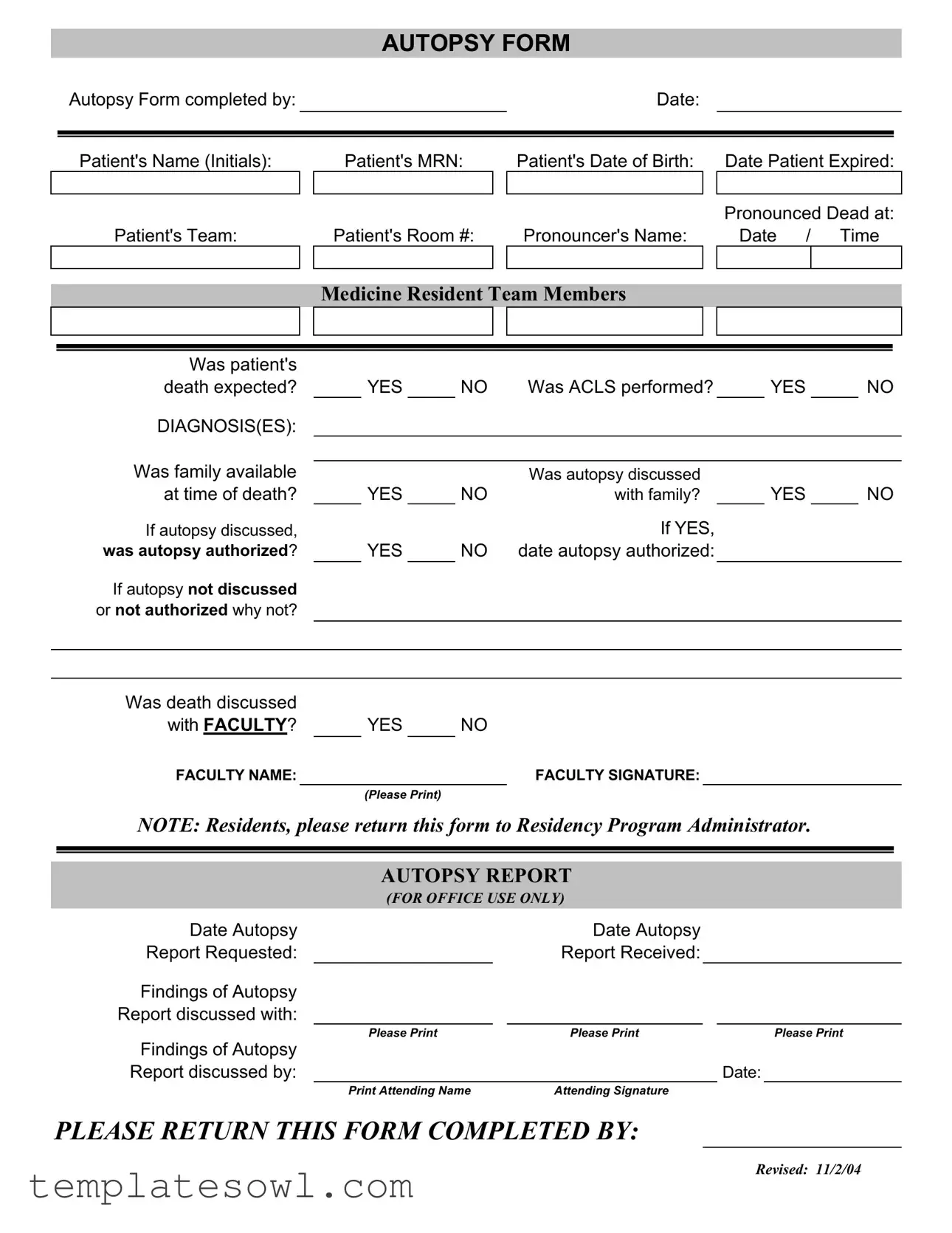Completing the Autopsy Report form may seem straightforward, yet there are common mistakes that can complicate the process. One of the frequent errors is failing to fill in all required fields. Omitting essential information such as the Patient's Name or Pronouncer's Name can create unnecessary delays in processing the report.
Another common mistake involves unclear or illegible handwriting. Ensure that all entries are written clearly. If the information cannot be read, it may lead to confusion and miscommunication. Using printed text, when possible, can help alleviate this issue.
Many forget to indicate whether the patient's death was expected. This detail is crucial for the context of the autopsy. Indicating YES or NO in the respective checkbox provides important insights into the circumstances surrounding the patient's passing.
When discussing the autopsy with the family, documentation is key. Failing to note whether the autopsy was discussed with the family can create misunderstandings. It is important to record if the family was present and if they authorized the autopsy.
Another mistake involves neglecting to document the date of authorization for the autopsy when it has been discussed and approved. Without this date, the timeline of events surrounding the autopsy may become unclear.
Individuals sometimes skip the section regarding whether the death was discussed with faculty. This could be crucial in ensuring that the proper protocols were followed. It is essential to indicate whether faculty members were involved in the conversation.
Inaccuracies in the Attending Name or Signature may also lead to delays. The attending physician's details must be correct to ensure accountability and follow-up. Ensure that this section is completed accurately and clearly.
Some forget to return the form to the Residency Program Administrator. This step is critical. Not submitting the document promptly can hinder the administrative process and affect the overall autopsy timeline.
Finally, ensure that you are using the correct version of the form. Revisions, like the one dated 11/2/04, should always be referenced to avoid using outdated information. Keeping up-to-date on form versions ensures compliance with the latest protocols.

